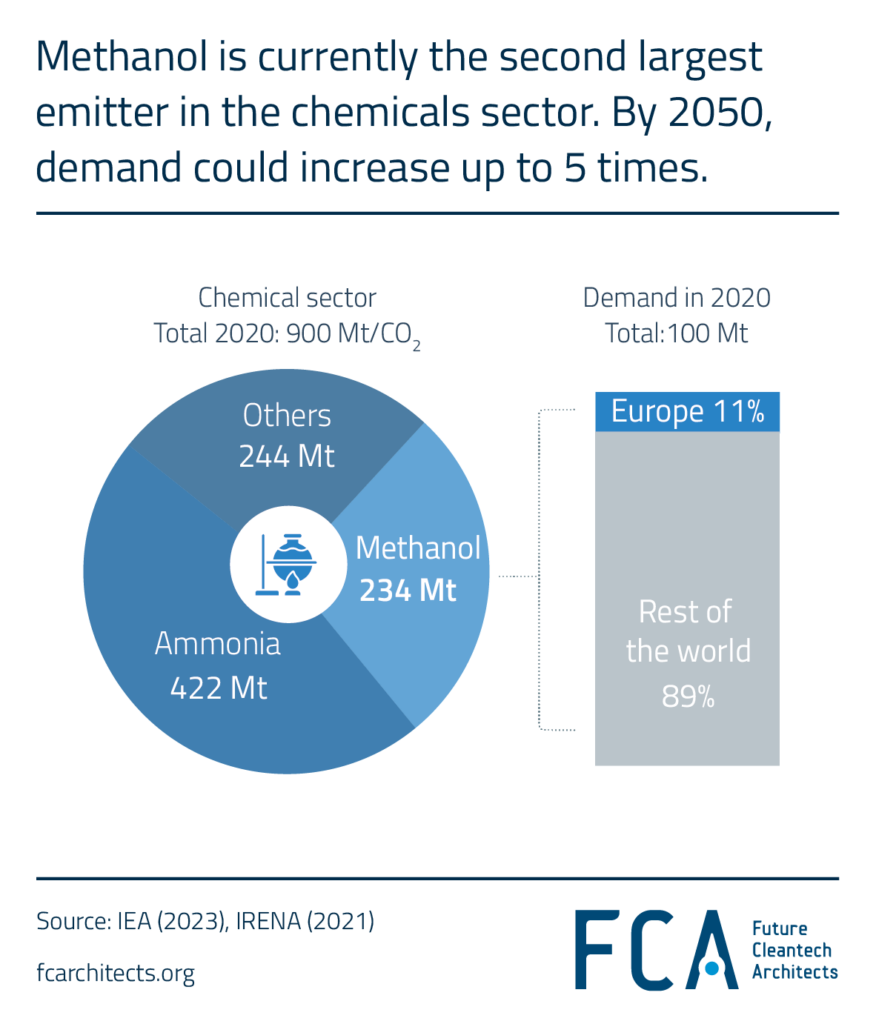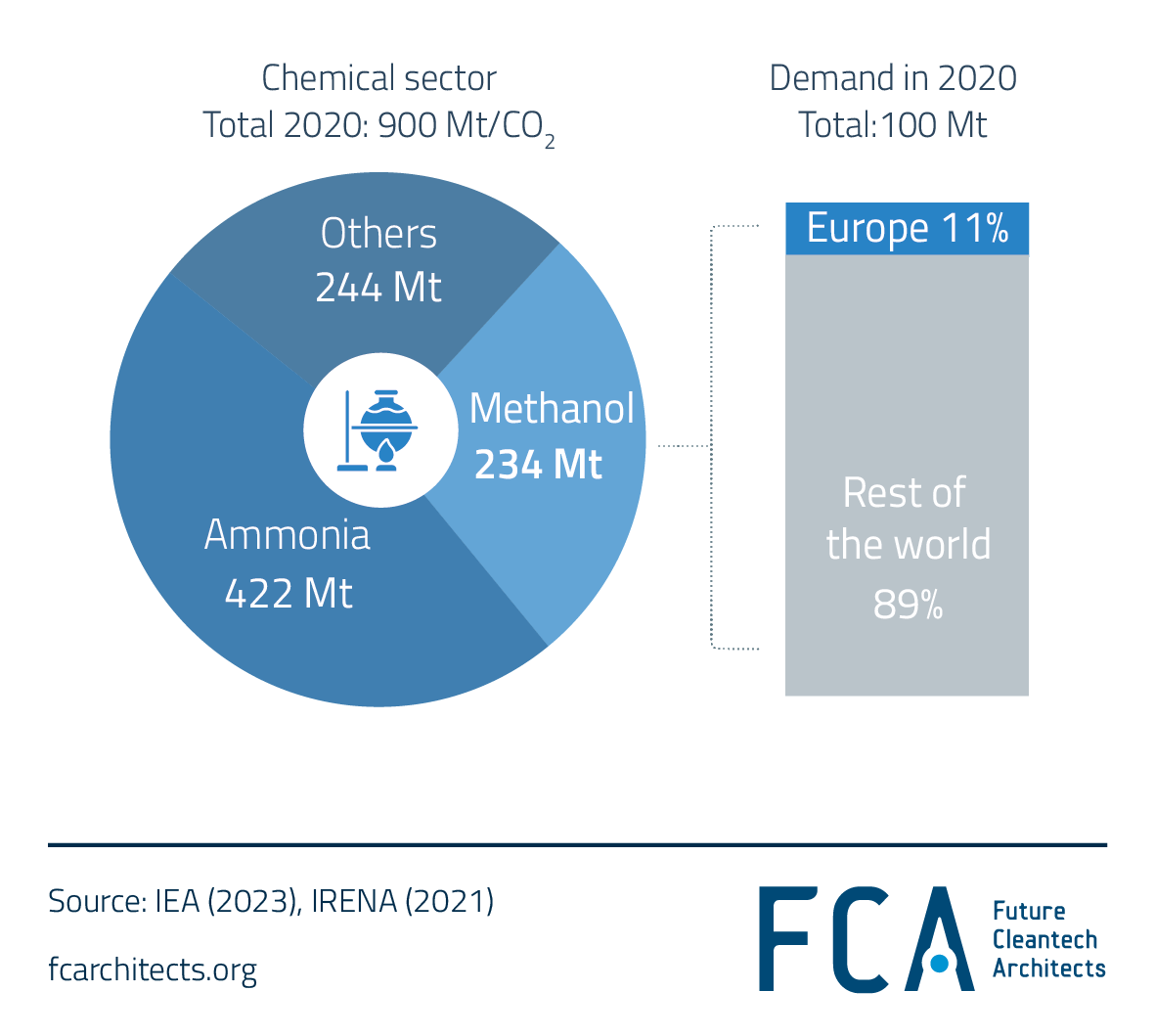
Methanol is the second largest emitter in the chemical sector, right after ammonia, contributing approximately 0.3 Gt of CO2 emissions on a lifecycle basis. In 2020, global demand for methanol was around 100 Mt. By 2050, this demand could soar to 500 Mt, potentially resulting in significantly larger CO2 emissions. Europe currently consumes about 11.3 Mt of methanol, accounting for roughly 11% of global demand.
Approximately 60% of methanol is used in the chemicals industry, where it serves as a versatile organic feedstock for derivative chemicals and fuels or as a final product across various sectors, including pharmaceuticals, construction, and transport. Methanol is integral to producing everyday items such as plastics, paints, polyester, gloves, and masks. Among its many derivatives, formaldehyde stands out as the most common, being found in glues, dyes, textiles, disinfectants, car parts, and more.
In the EU, methanol is the third-largest consumer of hydrogen, after refining and ammonia production. Hydrogen is a crucial feedstock for methanol synthesis, with approximately 13% of the EU’s hydrogen demand—around 1 Mt/year—dedicated mainly to methanol production in the chemical industry. Of this, Germany accounts for about 22% of hydrogen, consuming roughly 0.22 Mt/year. As methanol demand continues to rise, so too will the demand for hydrogen. However, 99% of methanol production still relies on fossil fuels, primarily through steam methane reforming (SMR) to produce synthesis gas, resulting in significant CO2 emissions. Green hydrogen and sustainable sources of carbon represent less than 1% of the total feedstocks used for methanol production.
Learn more about hydrogen and its derivates here!

